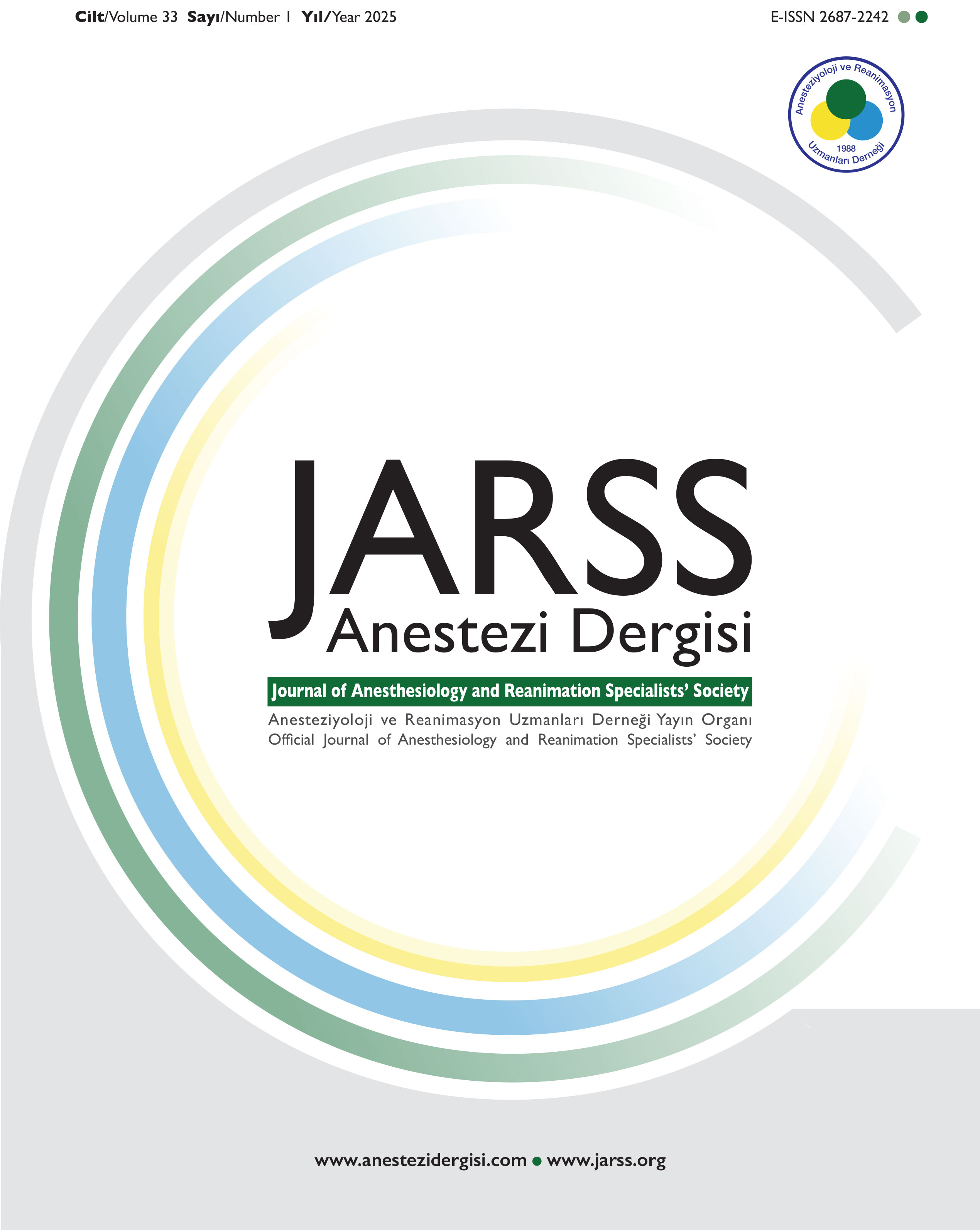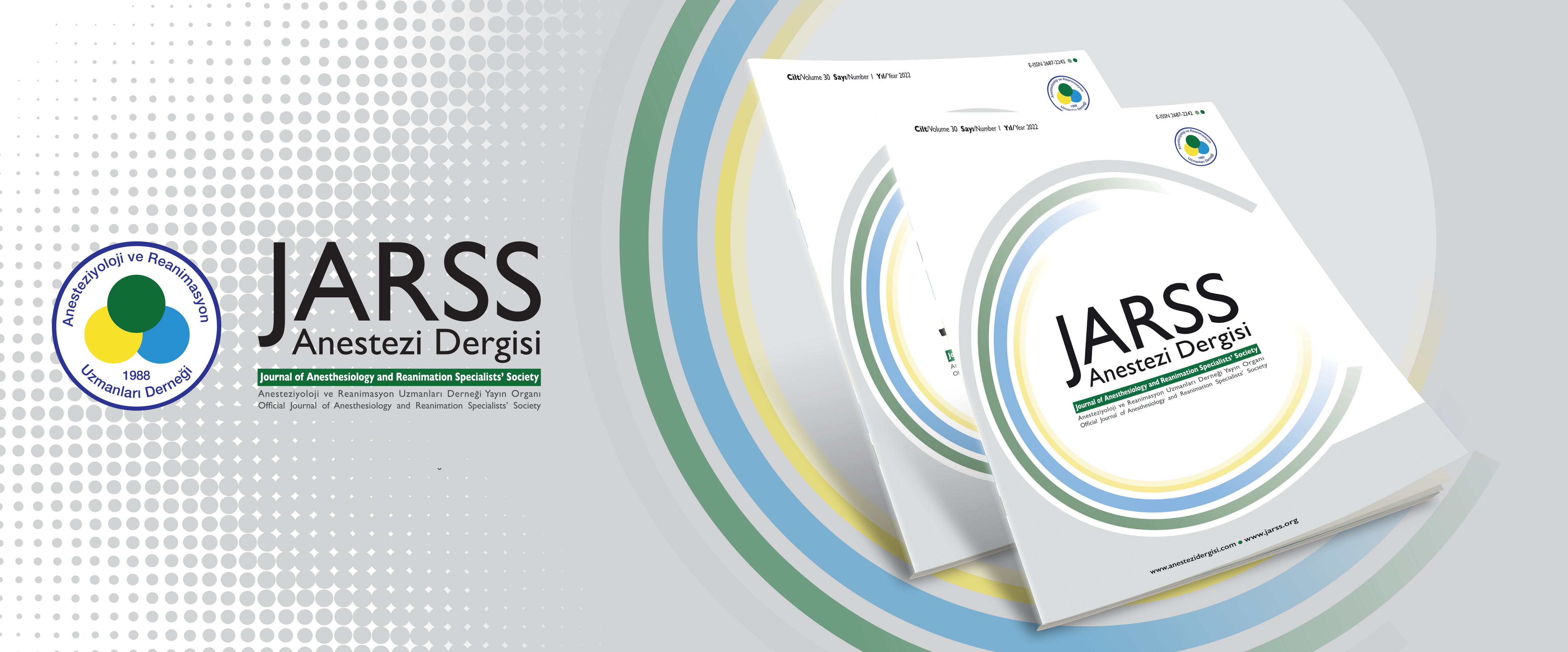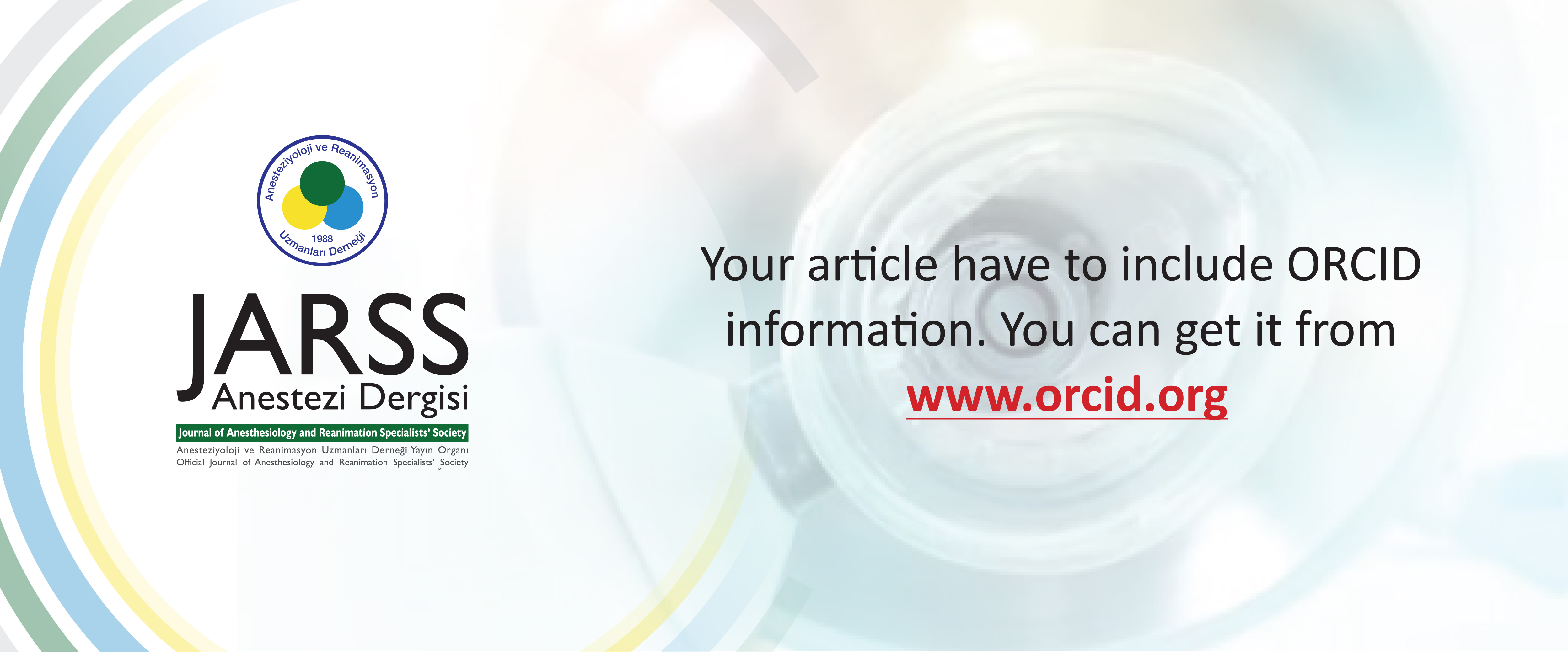Volume: 27 Issue: 4 - 2019
| 1. | Cover Page I (715 accesses) |
| 2. | Contents Pages II - VI (1028 accesses) |
| REVIEW | |
| 3. | Journals and Congresses in The Sharıng of Unıversal Scıence F. Yeşim Gökce Kutsal doi: 10.5222/jarss.2019.50479 Pages 235 - 244 (1543 accesses) Journals and the congresses are the formal information channels that form the basis for scientific communications. Editors of scientific journals have responsibilities toward their journals, authors and readers. They are responsible for monitoring the peer-review editorial process so as to ensure the fairly, timely, and thoroughly realization of counselling procedures. The journals have their own manuscript selection, and publication criteria. The peer-review system plays an important role in ensuring the integrity of the scholarly record. Clear communication between the journal and the reviewers carries importance. Editors mediate all interactions between reviewers and authors so as to facilitate consistent, fair and timely review. Reviewers are selected by the editors and they are responsible for the fair and scientific evaluation of the manuscripts in time. The process of selecting a suitable journal for publication should be taken seriously because the identification and avoidance of predatory journals and conferences is an important issue. Unfortunately, currently, researchers receive little education or support about navigating journal selection and submission processes. |
| ORIGINAL RESEARCH | |
| 4. | The Relationship Between Positive Fluid Balance and Mortality in Septic Shock Esra Çakir, Ahmet Bindal, Nevzat Mehmet Mutlu, Pakize Özçiftci Yılmaz, Cihangir Doğu, Işıl Özkoçak Turan doi: 10.5222/jarss.2019.96168 Pages 245 - 250 (1702 accesses) INTRODUCTION: The most suitable therapy modality for resuscitation of septic shock, is still not known yet. There are some reports mentioning some correlation between the worrying results and positive fluid balance of patients having septic shock. This study aimed to identify this relationship. METHODS: This retrospective study was conducted in Anesthesia and Reanimation Intensive Care Unit between 1 January 2017 and 31 December 2017. The data of the patients were obtained from the medical records. The relationship between fluid balance and mortality between 0-24 hours, 0-72 hours and 0-7 days was evaluated in all hospitalized patients with sepsis. RESULTS: We studied 164 patients with sepsis. The area beneath the curve of Receiver Operating Characteristic (ROC) was 0,794 on 24th hour (95% confidence interval (CI): 0.724 – 0.853 p = 0.0001). The cutoff level of fluid balance for mortality on 24th hour was found out to be >1700 mL (sensitivity: 73.61%, 95% CI: 61.9-83.3, specificity: 76.09%, 95% CI: 66.1-84.4). The area beneath the curve of ROC was 0,823 on 72th hour (95% CI: 0.753 – 0.880 p = 0.0001). The cutoff level of fluid balance for mortality on 72th hour was found out to be >1600 mL (sensitivity: 86.15%, 95% CI: 75.3-93.5, specificity: 67.82%, 95% CI: 56.9-77.4). The area beneath the curve of ROC was 0,823 on 7th day (95% CI: 0.780 – 0.916 p = 0.0001). The cutoff level of fluid balance for mortality on 7th day was found out to be >1910 mL (sensitivity: 100%, 95% CI: 92.7-100, specificity: 66.15%, 95%CI: 53.4-77.4). DISCUSSION AND CONCLUSION: Daily positive fluid balance is strictly correlated to mortality thus, close follow up for fluid balance may enhance us for the prediction of mortality. |
| 5. | Can Perfusion Index or Pleth Variability Index Predict Spinal Anesthesia Induced Hypotension During Caesarean Section? Mahmut Arslan, Gözen Öksüz, Bora Bilal, Cengizhan Yavuz, Mehmet Kandilcik, Adem Doğaner, Feyza Çalışır doi: 10.5222/jarss.2019.69775 Pages 251 - 257 (2279 accesses) INTRODUCTION: Although spinal anesthesia is the preferred anesthetic method for caesarean section, it leads to hypotension in a significant proportion of the patients. In this study, we assessed the predictive ability of perfusion index (PI) and pleth variability index (PVI) in different positions, for hypotension after spinal anesthesia administered for caesarean delivery. METHODS: Ninety parturients scheduled for elective low segment caesarean section under spinal anesthesia were enrolled. In the preoperative holding area, PI and PVI values were recorded in the supine, semi-recumbent, passive leg raise and left lateral positions. Then, parturients were taken to the operating room; PI and PVI were recorded again in the supine and sitting positions. Spinal anesthesia was performed with 0.5% hyperbaric bupivacaine (10 mg) through L3-L4 or L4-L5 interspaces in the sitting position. PI and PVI values one minute after spinal anesthesia induction were recorded as postspinal measurements. The effect of independent variables on hypotension was analyzed with logistic regression analysis. The relationship between PI and PVI values and incidence of hypotension was evaluated using ROC analysis. RESULTS: The incidence of hypotension was 60%. Post-spinal PVI was found to have a weak predictive value for post-spinal hypotension (AUC=0.663, 95% CI 0.530-0.796, p=0.024). DISCUSSION AND CONCLUSION: Among the parameters evaluated, only post-spinal PVI was associated with spinal anesthesia-induced hypotension in caesarean section. However, it may not be useful in routine clinical practice due to its low specificity and sensitivity. |
| 6. | Evaluation of the Attitudes of Anesthesiologists to the use of Clinical Ultrasonography Fatma Kavak Akelma, Savas Altinsoy, İlkay Baran Akkuş, Hilal Aslan, Julide Ergil doi: 10.5222/jarss.2019.79188 Pages 258 - 264 (1387 accesses) INTRODUCTION: The aim of study was to evaluate the use of ultrasonography in clinical anesthesia and its role in clinical practice among anesthetists. METHODS: Study was approved by the independent Ethics Committee. 146 anesthesiologist were included. The questionnaire was asked by face to face or by email. Clinical ultrasonography attitudes were evaluated with a 5-pointLikert scale. RESULTS: The mean age of the participants was 38.45±9.49, consisted of 28% assistant physicians and 72% specialist physicians; 53.79% of them were employed in the educational research hospital, 21.38 in the state hospital, 16.55% in the university hospital and 8.28% in the private hospital. Assistant physicians used ultrasonography in both regional and clinical anesthesia interventions compared to specialist physicians (p= 0.008). As compared to specialist physicians, assistant physicians think that assistant education is sufficient for ultrasonography use. There was no difference between physicians in terms of the need for an additional course. The majority of participants think that ultrasonography use contributes to clinical practice. Clinical ultrasonography is most preferred in central venous attempts (97.3%). DISCUSSION AND CONCLUSION: Ultrasonography is frequently used by anesthetists in the detection and treatment of perioperative clinical problems as well as regional methods. In the our study, The use of ultrasonography in the field of regional and clinical anesthesia was more preferred among the physicians who were continuing their specialist training compared to the specialist physicians. The rate of ultrasonography use was found to higher in education clinics. |
| 7. | Cost Analysis According to Diagnosis in Tertiary Care Patients in a University Hospital Kevser Peker doi: 10.5222/jarss.2019.98852 Pages 265 - 271 (2756 accesses) INTRODUCTION: In this study, it was aimed by increasing the cost control and efficiency by calculating the differences between the income and expenses which are very important in hospital costs according to the diagnosis in the ICU. METHODS: The income and expense data of the patients were taken from the data processing and billing departments and analyzed according to the patient diagnosis. Patients' demographic data, hospitalization times, intensive care unit results, total income and expenses, treatment fees, drug and consumables fees were evaluated separately RESULTS: A total of 115 patients were included in this study. The diagnosis groups of the patients were acute repiratory distress syndrome, pulmonary edema, intoxication, traffic accident, chronic obstructive pulmonary disease (COPD), pneumonia, pulmonary embolism, postoperative patient and cardiac arrest. It was observed that the income per patient was 619.47 turkish liras in the COPD group, there was a cost loss in the postoperative group. DISCUSSION AND CONCLUSION: The use of cost analysis methods in ICUs may enable both continuation of existing treatments and new arrangements according to needs. At the same time, limited resources can be used in the most efficient way. Thus, it may be easier for ICU patients to reach advanced therapies. |
| 8. | The Effects of Adding Opioids to Anaesthesia on the Recovery of Patients with Gynaecological Cancer Receiving Brachytherapy Güldeniz Argun, Sinem Gevenkiriş, Süheyla Ünver doi: 10.5222/jarss.2019.63308 Pages 272 - 276 (979 accesses) INTRODUCTION: The aim of this retrospective study was to investigate the effects of using propofol alone and using fentanyl addition to propofol on post-operative analgesic consumption, duration of recovery and discharge for brachytherapy in patients with gynaecological cancer. METHODS: After obtaining the study approval from the local ethics committee, 67 patients who had brachytherapy within 5 months were included in the study. All patients were administered midazolam for premedication and propofol and fentanyl if necessary for induction. Patients were categorised into two groups, those using opioids (Group I, n = 37) and those not using opioids (Group II, n = 30). The duration of the procedure, drug doses, haemodynamic data, recovery times and discharge times were obtained from records and evaluated. RESULTS: The duration of operation was similar in both groups. Propofol consumption was 1.865 mgkg−1 in Group I and 2.03 mgkg−1 in Group II (p > 0.05). The average fentanyl consumption in the opioid group was 1.12 mcgkg−1 and the average age was significantly lower in this group. No difference was detected between the groups in terms of the analgesic consumption and the duration of recovery and discharge. DISCUSSION AND CONCLUSION: Anaesthetics with shorter half-life are preferred in daily interventions. This study showed that the average age of the patients who required fentanyl during anaesthesia for brachytherapy was lower; and the fentanyl that is administered additionally did not lead to significant prolongation in recovery time. |
| 9. | Intraoperative Mechanical Ventilation Strategies in Newborns and Children: A National Survey Zehra Hatipoğlu, Oya H. Yüregir, Dilek Ozcengiz doi: 10.5222/jarss.2019.81994 Pages 277 - 284 (1285 accesses) INTRODUCTION: Most children under general anesthesia need mechanical ventilation (MV), but it has been reported in the literature that many parameters for this application are derived from adult patients. There is lack of literature about intraoperative MV for children. We conducted this survey to evaluate how intraoperative respiratory parameters based on MV were managed for newborns and children among Turkish anesthesiologists. METHODS: A questionnaire containing 34 questions was sent to anesthesiologists. This survey collected information on clinical practice relative to MV modes, tidal volume, positive end-expiratory pressure (PEEP), fraction of inspired oxygen (fiO2), breath rate, the monitoring of peripheral oxygen saturation (SpO2) and end-tidal carbon dioxide (EtCO2) and recruitment maneuvers (RMs). RESULTS: A total of 148 anesthesiologists and anesthesia assistants responded to this survey. Of these respondents, 77 % were working at a university hospital. More than 60 % of respondents were using volume-controlled modes for newborns and children. The most commonly used tidal volume and PEEP values were 6-8 mLkg-1 and 3-4 cmH2O, respectively. Monitorization, including SpO2 and EtCO2 was used by over 85 % of respondents, while 75.7 % used RMs, which were often (55.4 %) used during hypoxia with manual inspiratory pressure (71.6 %). DISCUSSION AND CONCLUSION: In general, the results of the present study were compatible with the existing literature. However, information on intraoperative MV is limited, and there is a need to study on this area further. |
| 10. | Transversus Abdominis Plane (TAP) Block for Postoperative Analgesia After Laparascopic Cholecystectomy, a Retrospective Study Ferda Yaman, Gökhan Karaca, Selim Çolak, Gökay Ateş, Faruk Pehlivanlı, Işın Gençay, Gülçin Aydın doi: 10.5222/jarss.2019.83584 Pages 285 - 290 (1028 accesses) INTRODUCTION: Laparascopic cholecystectomy is minimally invasive surgical procedure but it is still associated with postoperative pain in first 24 hours. Ultrasound guided transversus abdominis plane block is a regional anesthetic technique provides postoperative analgesia in abdominal surgery. We aimed to determine the effects of the TAP block on discharge time, non-opioid and opioid consumption, shoulder tip pain, incidence of postoperative nausea and vomit, severity of pain utilizing visual analogue scale in patients operated for laparascopic cholecystectomy METHODS: Seventy two eligible patients operated for laparascopic cholecystectomy were included the study. Thirty eight patients were performed ultrasound-guided TAP block, thirty four patients were treated with conventional methods such as non-steroid anti-inflamatory drugs. Data such as VAS pain scores, shoulder tip pain, intraoperative opioid consumption, postoperative non-opioid and opioid consumption, nausea vomit, and discharge time collected retrospectively to determine statistically differences between TAP block and non-TAP block groups. RESULTS: VAS pain scores were globally reduced at all time periods in two groups (significant group main effect, F(7,760)=94.47, P<0.001). VAS pain scores were significantly lower at all measurement intervals except 24h in the TAP group than in the non-TAP group. Shoulder pain was significantly higher in TAP block group than non-TAP block group (p < 0.001). Intraoperative opioid consumption, postoperative opioid consumption, discharge time, nausea and vomit, no statistically difference was found between the groups. DISCUSSION AND CONCLUSION: Ultrasound guided TAP block is an effective regional analgesic technique according to postoperative pain scores due to abdominal pain, however TAP block did not reduce shoulder tip pain. Multimodal pain management is required after laparascopic cholecystectomy |
| 11. | Comparison of the Error Rates of an Anesthesiologist and Surgeon in Estimating Perioperative Blood Loss in Major Orthopedic Surgeries: Clinical Observational Study Nureddin Yüzkat, Celaleddin Soyalp, Nurçin Gülhas doi: 10.5222/jarss.2019.28290 Pages 291 - 297 (1149 accesses) INTRODUCTION: Because the anesthesiologist and surgeon have different observation angles in the intraoperative period, their predictions based on clinical observation involve large variations. Whether these predictions accurately reflect actual blood loss is still a matter of debate. The aim of this study was 35 to compare the clinical observations of anesthesiologists and surgeons on perioperative blood loss and transfusion requirements with laboratory results. METHODS: Sixty patients who underwent surgery for major orthopedic surgery were included in the study. Same anesthesiologist and same surgeon was asked to estimate the amount of blood loss during the perioperative period. Whether blood transfusion was needed or not, was asked. The amount of blood loss was calculated synchronous using the perioperative hemoglobin value and the total blood volume. The blood loss estimates of the anesthesiologist and the surgeon were compared, with blood loss calculated according to the laboratory results. RESULTS: The anesthesiologist’s and the surgeon’s estimation of perioperative mean blood loss volume was found to be lower than the blood volume calculated according to laboratory results (p=0.01). The 45 blood loss up to 600 mL were overestimated, and were underestimated when blood loss was more than 600 mL (p=0.01). According to our findings, the rate of error in the perioperative blood loss estimate was 28.72%. When the blood loss was more than 1000 mL, the error rate of predictions was 34.03%; when the blood loss was less than 1000 mL, the error rate of predictions was 25.18%. DISCUSSION AND CONCLUSION: We believe that when blood loss is more than 1000 ml in major 50 orthopedic surgeries, the error in the estimation is increased, the amount of blood loss is difficult to predict, and the anesthesiologist makes a better prediction than the surgeon. |
| 12. | Comparison of Two Peripheral Block Methods For Position Pain in Femoral Neck Fractures Hidayet Ünal, Semih Başkan, Fahri Acar, İsmail Aytaç doi: 10.5222/jarss.2019.39306 Pages 298 - 303 (1314 accesses) INTRODUCTION: Orthopedical pathologies such as hip fracture are more common among advanced aged population. Pain management becomes more important in patients who are being treated for hip fracture due to an increase in the number of patients. In this study, we compared two peripheral nerve block methods that could be used to relieve positional pain in spinal anesthesia, in terms of efficacy and patient satisfaction METHODS: Our study was planned as a randomized, prospective, double-blind, single-centered trial. A total of 59 patients aged over 60 years with an American Society of Anesthesiologists (ASA) physical risk scale I-III were included in the study. Patients divided into two groups as Fascia iliaca compartment block (FICB) (Group 1), and Femoral nerve block (FNB) (Group 2). RESULTS: Complete sensory block developed in higher number of patients in the FNB group (73.3% for FNB, 44.8% for FICB). However, there was no statistically significant difference in the time to the development of complete block between groups (FICB, 16.2±3.7 and FNB, 14.8±3.6). In our study, we found that both blocks were effective at lowering the visual analogue scale (VAS) scores (5 points for both groups). Although there was no statistically significant difference, higher satisfaction level was observed in the FNB group. DISCUSSION AND CONCLUSION: Just like FICB, FNB can be used to relieve pain during positioning of the patient in neuraxial block applications |
| CASE REPORT | |
| 13. | Diagnosis and Treatment of Tracheoesophageal Fistula in Tetraplegic-Ventilator Dependent Patient, Case Report Fatma Ozkan Sipahioglu, Mehmet Murat Sayın doi: 10.5222/jarss.2019.51523 Pages 304 - 307 (1105 accesses) Acquired tracheoesophageal fistula (TEF) is a rare complication that should not be forgotten in intensive care units (ICUs). Cuff -related tracheal damage is the most common cause among the benign causes of TEF. In this case presentation, the diagnosis and treatment of TEF in a mechanically ventilated tetraplegic patient are discussed. A 45-year-old patient with tetraplegia due to high cervical fracture after a traffic accident was admitted to our ICU from another center where he was followed up with tracheostomy and mechanical ventilation. There was a sudden deterioration in patient’s general health condition while he was stable on the 37th day of tracheostomy. Despite adequate ventilation, the patient had CO2 retention. Abdominal distention developed and air was observed in nasogastric drainage tube. Computerized tomography revealed a TEF. Endoscopy was performed for definitive diagnosis. Endotracheal tube cuff that entered into the esophagus was visualized. Tracheostomy cannula was replaced by an endotracheal tube and the balloon was inflated distally from the fistula. The patient underwent a primary repair surgery successfully one week later. In the postoperative period the patient was followed-up with an adjustable tracheostomy cannula. The patient is still being followed up by us in our intensive care unit. Tracheoesophageal fistula is one of the late complications of tracheostomy. Early diagnosis is important to protect the patient from possible fatal pulmonary complications. Increased tracheal secretions, aspiration of gastric contents, ventilation difficulties, abdominal distention or filling of air into the nasogastric tube should alert us for TEF. Tracheoesophageal fistula may not be recognized immediately in ventilator-dependent patients. Adjustable tracheostomy tubes should be considered in special cases. |
| 14. | Postdural Puncture Headache in Multiple Sclerosis; What shall we do now? Zuhal Çavuş, Nilufer Coskun doi: 10.5222/jarss.2019.86580 Pages 308 - 310 (1136 accesses) Potential effects of epidural pressure changes caused by epidural blood patch applications are important due to their interference with axonal conduction in patients with multiple sclerosis. There are limited number of case reports about safety and efficiency of epidural blood patch applications in multiple sclerosis patients. Herein, we aimed to report a successful epidural blood patch treatment in a 26-year-old female patient with multiple sclerosis. |
| 15. | Anesthesia Management in Omphalopagus Type Conjoined Twins: A Case Report Aydın Mermer, Yasin Tire, İbrahim Akkoyun doi: 10.5222/jarss.2019.64936 Pages 311 - 314 (1329 accesses) Birth as conjoined twins is a rare condition with a rate of 1/200.000. One of these conjoined twins is omphalopagus type conjoined twins. We aimed to present anesthesia management of omphalopagus type conjoined twins with VSD (Ventricular Septal Defect) in one of 8-day-old twins. |
| LETTER TO THE EDITOR | |
| 16. | Letter to the editor: Mean Platelet Volume May Not be a Predictive Marker for Mortality in Post Cardiac Arrest Patients Undergoing Targeted Temperature Management Cengiz Beyan, Esin Beyan doi: 10.5222/jarss.2019.87487 Pages 315 - 316 (745 accesses) Abstract | |
| 17. | Author Index Page 5000 (733 accesses) Abstract | |

















